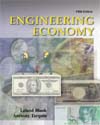In this chapter the emphasis is on sensitivity to variation in one or more parameters using a specific measure of worth. When two alternatives are compared, compute and graph the measure of worth for different values of the parameter to determine when each alternative is better. When several parameters are expected to vary over a predictable range, the measure of worth is plotted and calculated using three estimates for a parameter— most likely, pessimistic, and optimistic. This formalized approach can help determine which alternative is best among several. Independence between parameters is assumed in all these analyses. The combination of parameter and probability estimates results in the expected value relations E(X) = ∑XP(X) This expression is also used to calculate E(revenue), E(cost), E(cash flow), E(PW), and E(i) for the entire cash flow sequence of an alternative. Decision trees are used to make a series of alternative selections. This is a way to explicitly take risk into account. It is necessary to make several types of estimates for a decision tree: outcomes for each possible decision, cash flows, and probabilities. Expected value computations are coupled with those for the measure of worth to solve the tree and find the best alternatives stage by stage. | 


 2002 McGraw-Hill Higher Education
2002 McGraw-Hill Higher Education